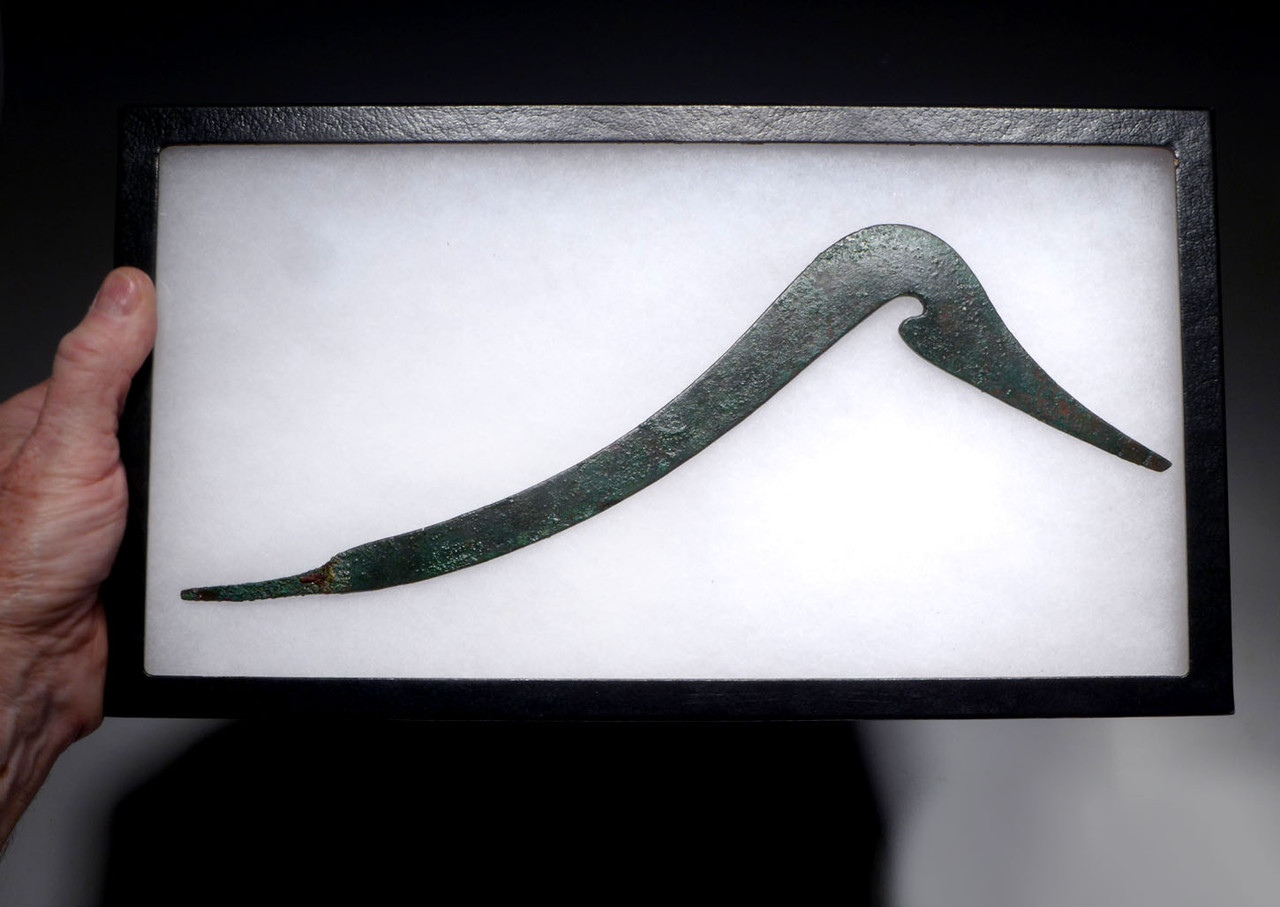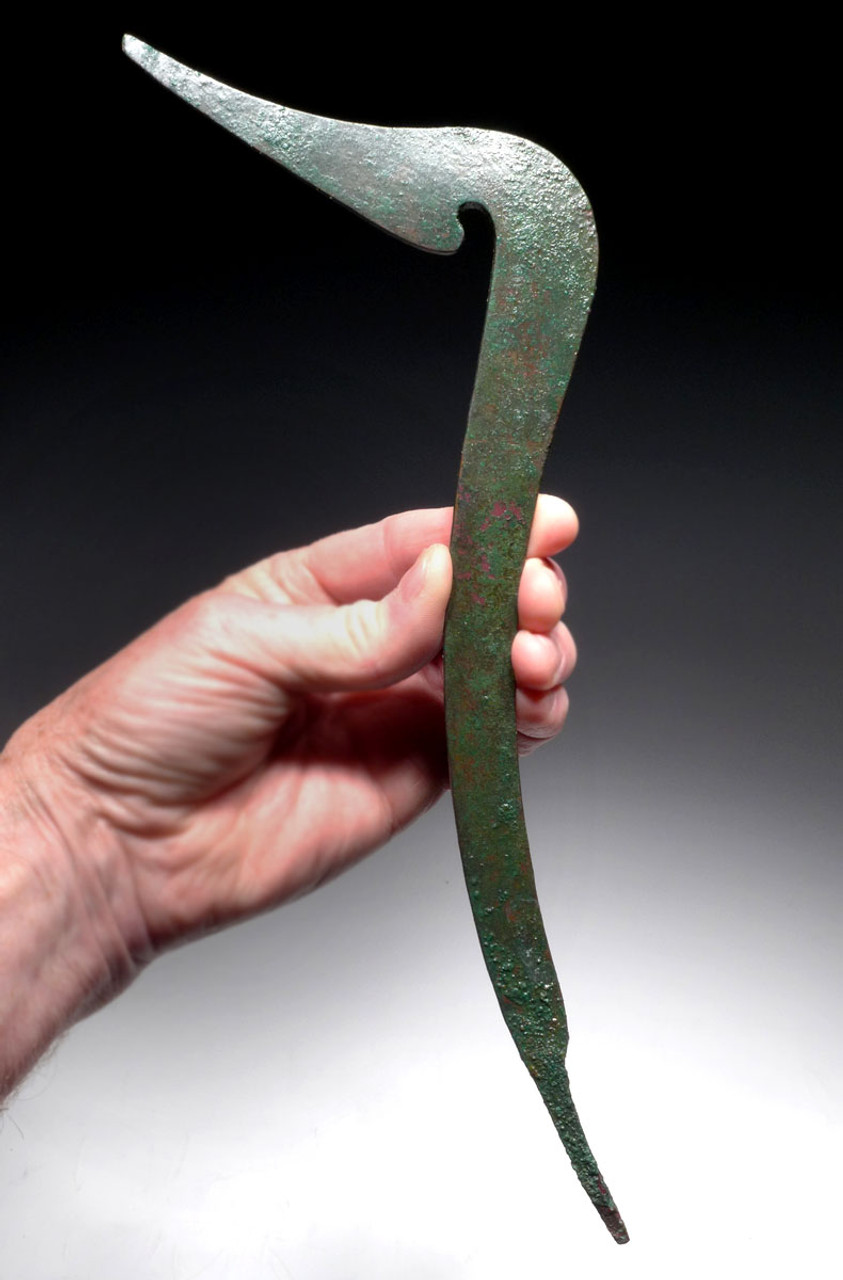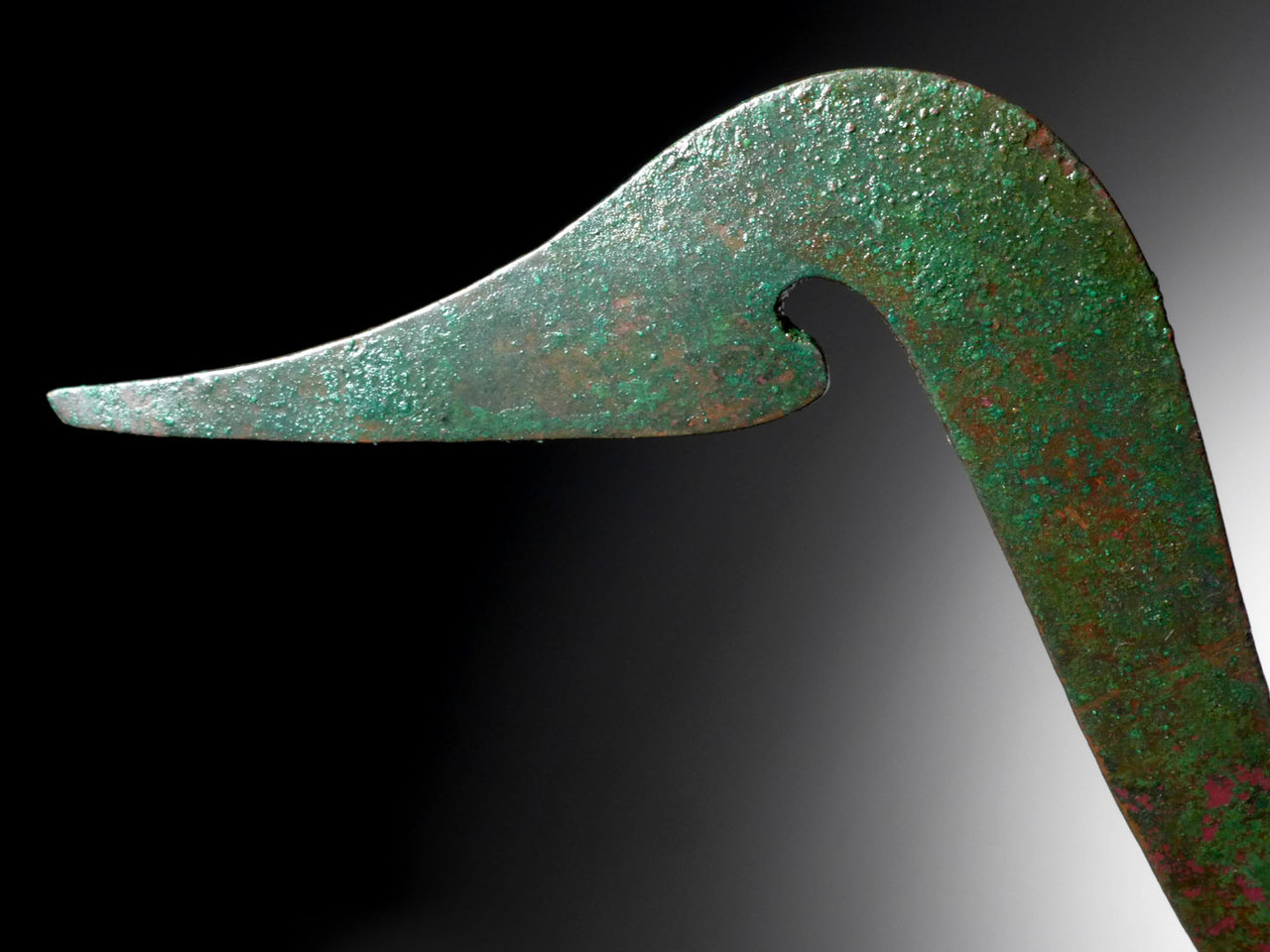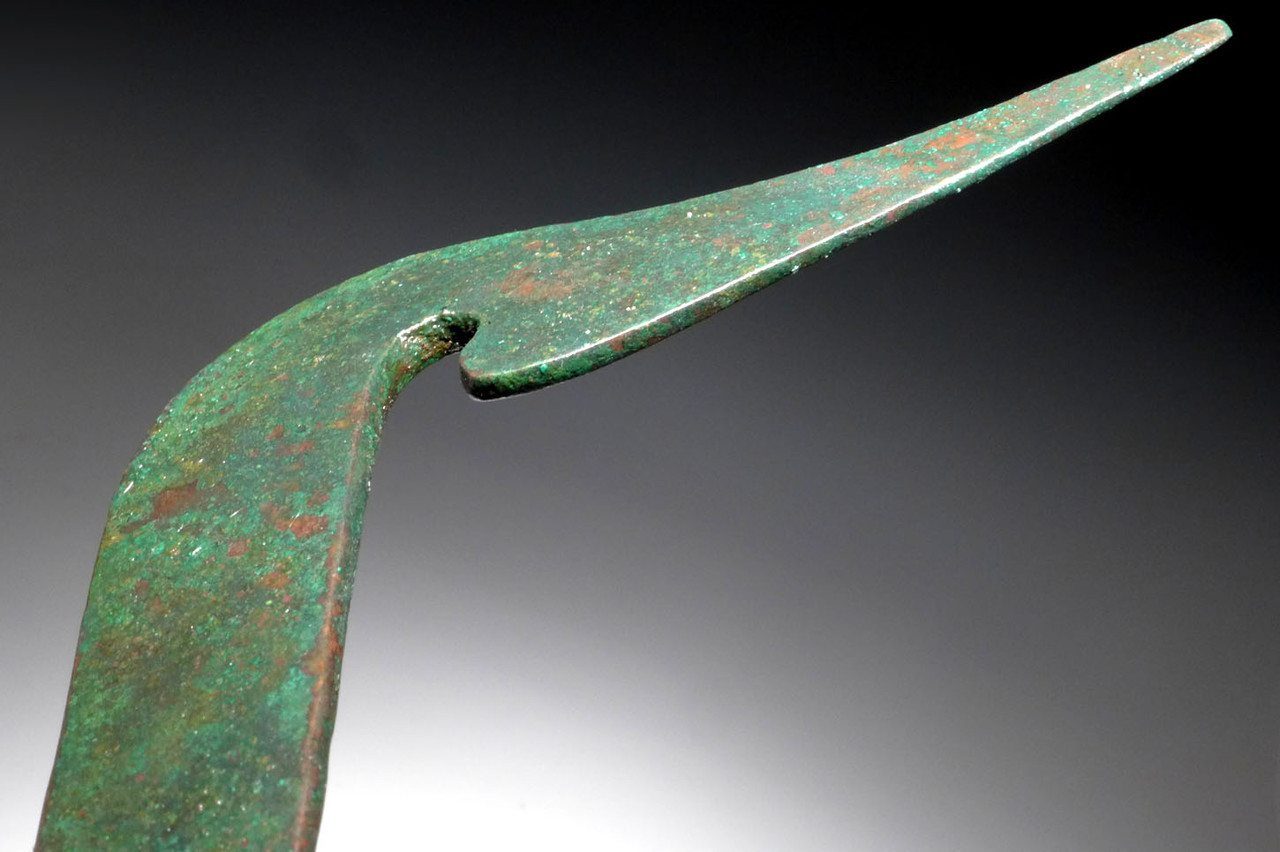Product Description
SEE MORE ANCIENT NEAR EASTERN ARTIFACTS
Without question, this is the rarest ancient object OF ANY CULTURE, we have ever offered. For a collector of ancient weapons or swords, calling this a "Holy Grail" specimen is an understatement. In 32 years of working with ancient objects, we have never seen anything like this outside of ONE published paper (referenced below) of excavations done of Gonur Depe, Turkmenistan, a major settlement of the Bactria–Margiana Archaeological Complex.
Similar to a specimen found in the tombs of Gonur Depe (Gonur Tepe), Turkmenistan and published in this paper, page 11, figure 8a. This is what the author called a harpoon" or "rod", as illustrated and shown in this paper. This weapon is also depicted in the hand of the goddess Ishtar (her foot is on a lion's
back) on a wall drawing in the ancient Royal Palace of Mari, Syria. Considering its extreme scarcity in the ancient record, and depiction being carried by a deity, it is most likely this enigmatic weapon was purely intended for the highest royal use or ceremony.
This specimen is in the finest preservation with supreme light ancient colorful encrustations over a rich red layer of copper oxide. The complete tang still has fragments of ancient wood from the former handle, still attached to the surface (see photos).
It is almost guaranteed that another specimen like this will never surface on the private market again. No words can honestly emphasize its sheer rarity.
This piece has been professionally cleaned and conserved in our lab, being treated with a special sealer developed and formulated by us specifically for ancient metal preservation. The patina shows beautiful traits only found in authentic ancient weapons such as a layered mineralized patina with encrustations. No active bronze disease. Bronze disease can be a problem in bronze artifacts and untreated, it can literally eat away an artifact over a short time of a matter of years and turn the piece to powder.
WARNING: There is an increasing number of fake Near Eastern (Luristan) bronze weapons on the market. As fine quality intact, original specimens become more scarce and techniques have become more sophisticated to fake these weapons. We have personally handled numerous extremely well-done fakes with extremely convincing patinas. The degree to which the fakers have been able to replicate patina to disguise their work requires an expert examination by highly experienced individuals. It is common to find very reasonably priced weapons that are made up of part original and part modern components or wholly modern pieces displaying elaborate artificial patinas. All purchases should include from the dealer a written guarantee of authenticity with unconditional and lifetime return policies regarding such guarantee.
HISTORY
Bactria or Bactriana, was an ancient Iranian civilization in Central Asia centered on Northern Afghanistan or areas that comprises most of modern-day Afghanistan, and including parts of southwestern Tajikistan and southeastern Uzbekistan. To the south and east, it was bordered by the Hindu Kush Mountain range. On its western side, the region was bordered by the great Carmanian desert and to the north it was bound by the Oxus river.
Called "beautiful Bactria, crowned with flags" by the Avesta, the region is considered in Zoroastrianism to be one of the seventeen perfect Iranian lands that the supreme deity Ahura Mazda had created, and is one of the earliest centers of ancient Zoroastrianism. Bactria was the homeland of Indo-Iranians who moved south-west into Iran and the north-west of the South Asian subcontinent around 2500–2000 BC. It was in these regions, where the fertile soil of the mountainous country is surrounded by the Turan Depression, that the prophet Zoroaster was said to have been born and gained his first adherents. Avestan, the language of the oldest portions of the Zoroastrian Avesta, was one of the Old Iranian languages, and is the oldest attested member of the Eastern Iranian languages.
The main Bronze Age culture of the region dated from 2200 BC to 1700 BC is the Bactria–Margiana Archaeological Complex (BMAC) and also known as the "Oxus civilization". Several important trade routes from India and China (including the Silk Road) passed through Bactria and, as early as the Bronze Age, this had allowed the accumulation of vast amounts of wealth by the mostly nomadic population. The first proto-urban civilization in the area arose during the 2nd millennium BC. Control of these lucrative trade routes, however, attracted foreign interest, and in the 6th century BC the Bactrians were conquered by the Persians, and in the 4th century BC by Alexander the Great. These conquests marked the end of Bactrian independence. From around 304 BC the area formed part of the Seleucid Empire, and from around 250 BC it was the centre of a Greco-Bactrian kingdom, ruled by the descendants of Greeks who had settled there following the conquest of Alexander the Great.
 US DOLLAR
US DOLLAR
 EURO
EURO
 AUSTRALIAN DOLLAR
AUSTRALIAN DOLLAR
 CANADIAN DOLLAR
CANADIAN DOLLAR
 POUND STERLING
POUND STERLING




























